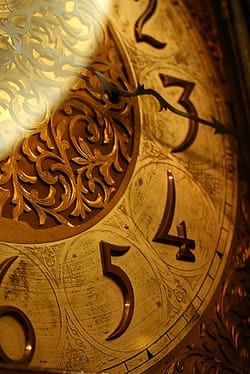Circadian rhythm sleep-wake disorders are a group of mental health conditions characterized by some sort of problem with the timing of the body’s circadian rhythm, which establishes the basic day/night cycle that governs sleep. Several different types of these disorders are officially recognized by the American Psychiatric Association (APA), a professional organization that plays a central role in defining the mental illnesses diagnosed by doctors across the US. In May 2013, the APA added several conditions to the list of circadian rhythm-related disorders; it also eliminated one condition from this list. Circadian Rhythm Basics Your internal circadian rhythm controls the normal times of day during which you feel sleepy or awake, the National Sleep Foundation explains. It does this by working in concert with parts of the brain that tell the difference between night and day, as well as with parts of the brain that alter various body functions designed to make you feel more alert or less alert. Most people have circadian rhythms that make them feel maximally sleepy in the early morning hours (between roughly 2 and 4 AM) and in the early afternoon hours (between roughly 1 and 3 PM). People who habitually sleep well generally feel less intense swings between their waking and sleeping cycles, while people who don’t usually sleep well typically feel more intense shifts between wakefulness and sleepiness. Circadian Rhythm Sleep-Wake Disorder Basics Prior to 2013, circadian rhythm sleep-wake disorders were known simply as circadian rhythm sleep disorders. All of the conditions in this category are known technically as dyssomnias; this means that they alter your normal ability to either fall asleep or stay asleep, or in some way reduce the restorative quality of your sleep. In order to qualify as an official disorder according to the terms set by the American Psychiatric Association, a circadian rhythm-related sleeping problem must appear as a separate listing in a reference guide called the Diagnostic and Statistical Manual of Mental Disorders, or DSM. The APA published the fifth edition of this guide in May 2013. All forms of officially diagnosable circadian rhythm-related sleeping problems feature ongoing or recurring sleep disturbances that stem from a misalignment between a person’s natural sleeping and waking cycle and the sleeping pattern that he or she has currently established. To qualify for a diagnosis, an affected individual must experience substantial anguish or life impairment as a result of his or her sleeping problems. In addition, his or her problems must not stem primarily from some other identifiable mental or physical health concern. Shifting Definitions The now outdated fourth edition of the DSM contains three types of circadian rhythm sleep disorder: delayed sleep type, which features unusually late sleeping and waking times; shift work type, which features nighttime insomnia or daytime sleepiness caused by participation in shift work that starts at night or at varying times; and jet lag type, which features alterations in the normal sleeping and waking cycle caused by recurring trips across two or more time zones. In addition, the fourth edition of the DSM contains a catchall category called unspecified type circadian rhythm sleep disorder. The fifth version of the Diagnostic and Statistical Manual eliminates jet lag type circadian rhythm sleep disorder from the list of recognized conditions. It also introduces three new types of circadian problems to official status: irregular sleep-wake type, non-24-hour sleep-wake type, and advanced sleep phase syndrome. People with irregular sleep-wake type circadian problems don’t have major nighttime sleeping problems, but still feel compelled to nap often during the day. People with non-24-hour sleep-wake type problems have sleeping patterns that don’t match up with a standard 24-hour day. People with advanced sleep phase syndrome follow sleeping and waking cycles that cause them to fall asleep and wake up unusually early each day. Considerations Certain populations have unusually high chances of developing specific types of circadian rhythm sleep-wake disorder, the American Academy of Sleep Medicine reports. For example, the delayed sleep type of the disorder appears with unusual frequency during adolescence and early adulthood. Non-24-hour sleep-wake type problems (also known as nonentrained or free-running type problems) tend to appear with high frequency in people who are completely blind. Advanced sleep phase syndrome is more common among the middle-aged and elderly, while irregular sleep-wake type problems occur more frequently in people who receive relatively few time-related cues such as those provided by daylight exposure or time-sensitive work and leisure schedules. Image by stevendepolo via Flickr Creative Commons

